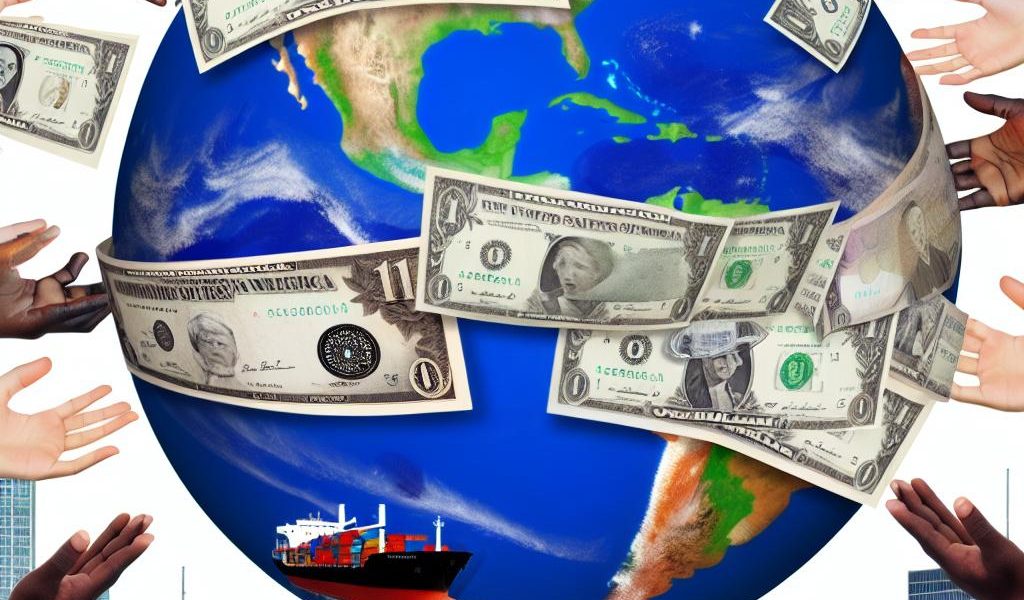
How to global financial system work
admin - April 2, 2025The Structure of the Global Financial System
The global financial system, an intricate and expansive network, acts as the backbone of international economies, impacting trade, economic growth, and personal finance. Comprehending the intricacies of this system can provide valuable insights into various financial and economic circumstances. Moreover, keeping informed about global finances can be achieved by visiting informative platforms such as The World Funds.
Main Components of the Global Financial System
The global financial system is structured into multiple key components. Each plays a significant role in facilitating and maintaining the efficiency of international financial operations.
Banks and Non-Banking Financial Institutions
Banks serve as the cornerstone of the financial system by linking those with excess funds to those requiring capital. By accepting deposits and granting loans, banks enable both individuals and enterprises to engage in economic activities. This intermediary role fosters economic growth and productivity. Beyond traditional banks, non-banking financial institutions like insurance companies, pension funds, and investment firms offer additional financial services, addressing diverse financial needs and risk management requirements.
Central Banks
Central banks, such as the Federal Reserve or the European Central Bank, hold a pivotal role in the global financial system. Their primary functions include regulating the money supply and setting interest rates. By implementing monetary policies, central banks strive to maintain financial equilibrium, steer economies away from crises, and provide stability as lenders of last resort. They can also influence currency stability and inflation through policy measures.
Financial Markets
Financial markets serve as arenas where entities trade various financial instruments, including stocks, bonds, and foreign currencies. These markets are critical for ensuring liquidity, facilitating efficient resource allocation, and enabling price discovery. Investors benefit from the ability to quickly buy and sell assets. The efficiency of these markets is vital, as they provide platforms for raising capital and redistributing financial resources globally.
International Financial Organizations
Global financial stability is further supported by international organizations like the International Monetary Fund (IMF) and the World Bank. These entities offer monetary assistance, promote international cooperation, and provide technical expertise. They play a crucial role in ensuring transparent and efficient economic operations, establishing guidelines, offering financial aid to countries in need, and fostering long-term economic development.
Processes Within the Global Financial System
To facilitate international trade and investment, the global financial system is underpinned by several complex processes. Among these, currency exchange, cross-border capital flows, and risk management are notable.
Currency Exchange
Currency exchange is the process that enables the conversion of one currency into another, an essential element in international trade and finance. Exchange rates fluctuate due to varied factors such as economic indicators, policy changes, and geopolitical tensions. Effective management of foreign exchange is crucial for businesses and individuals engaged in global commerce, ensuring efficient transactions and competitive pricing.
Cross-Border Capital Flows
Capital movement across borders is realized through foreign direct investment (FDI), portfolio investments, and diverse financial transactions. These capital flows are essential for infrastructure development, economic growth, and improvements in living standards across countries. They enable resource allocation for development projects, bring in expertise and technology, and stimulate economic dynamism.
Risk Management
Risk management strategies are integral to the functioning of financial institutions operating on a global scale. The use of derivatives, contracts whose value is based on underlying asset prices, allows institutions to hedge against potential losses. Diversification strategies are also employed to distribute risk across a broad array of investments. These tools help mitigate exposure to volatile market conditions and economic uncertainties.
Challenges and Considerations
Despite being an engine of economic growth, the global financial system is not without challenges. Financial crises pose significant threats, often having wide-reaching implications for economies worldwide. Regulatory diversity among countries can complicate cross-border financial activities and lead to compliance challenges. Additionally, technological advancements continue to redefine financial service delivery, often introducing both opportunities and risks, such as cybersecurity threats.
Developing economies often face barriers to entry due to the complexity and scale of the global financial system, potentially widening economic inequalities. Addressing these challenges requires concerted international cooperation, regulatory harmony, and adaptive financial policy frameworks that consider evolving technological landscapes.
Conclusion
In essence, the global financial system is a vast, complex network vital to facilitating economic interactions across the globe. It comprises multiple components and processes, each critical to its operation and maintenance. Grasping the structure, processes, and inherent challenges of this system is essential for understanding its impact on global economics and individual financial well-being. For further exploration, visiting reputable financial resources such as the IMF or the World Bank can provide deeper insights into global financial dynamics.
This article was last updated on: April 2, 2025
